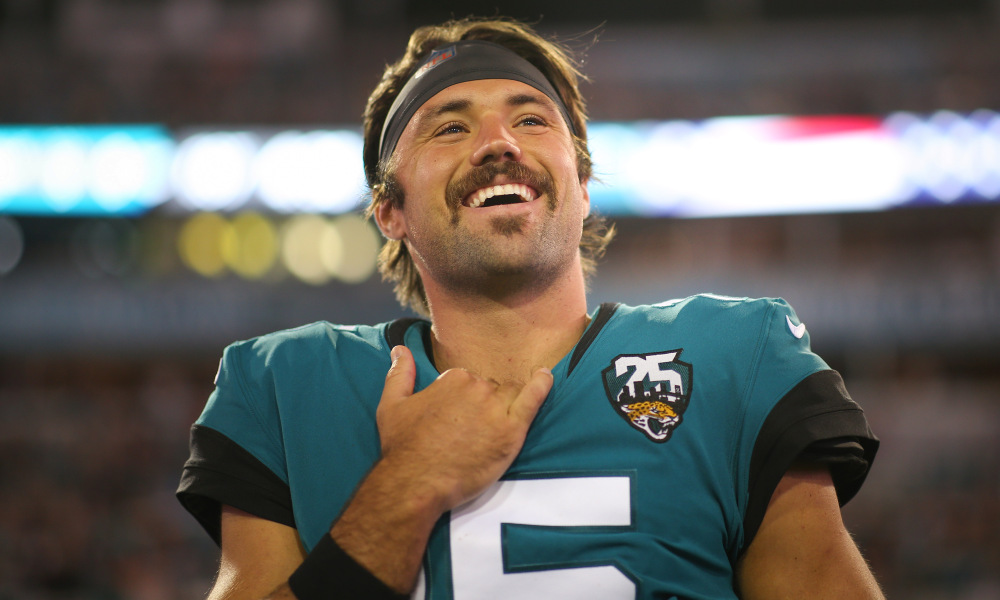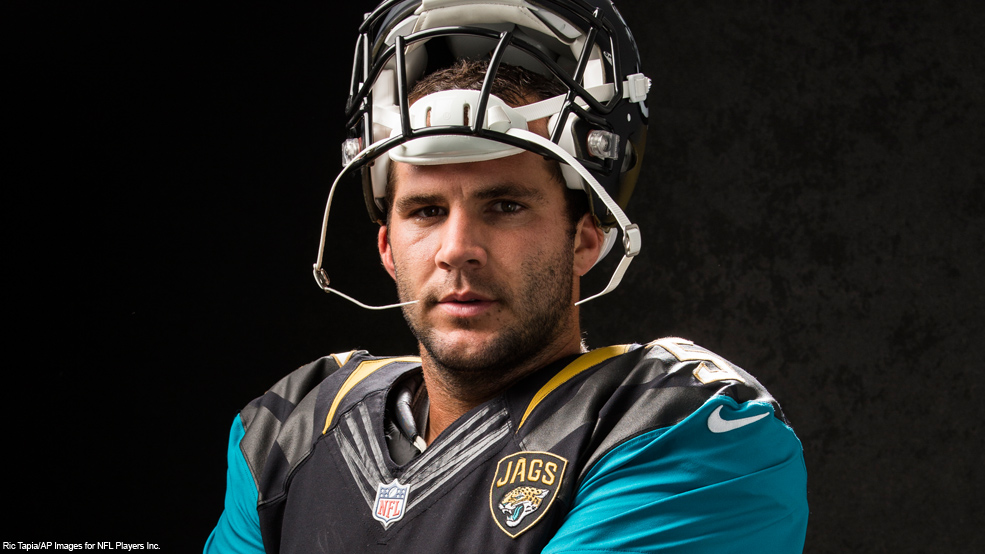DUUUUUVAL
 Monday, June 15, 2020 at 4:46PM
Monday, June 15, 2020 at 4:46PM 
With the Republican National Convention headed to Jacksonville, I figured this was an opportunity to write about my favorite part of Florida.
Also, before we get into it, for my media friends coming to Northeast Florida for the event, it is pronounced DOO-Vall with an emphasis on the “oo.” The longer you hold the “oo” – the better response you will get. Just ask President Obama, who nearly blew the roof off the arena at the University of North Florida by dropping a DUVAL at the start of a speech in 2016.
There is an immense amount of history here, even before Gardner Minshew arrived in 2019. Northeast Florida is Florida’s First Coast. Home to the Timucua people, Ponce De Leon landed here in 1513, somewhere near modern-day St. Augustine, and named the place “La Florida” – or as former Governor Crist rightly calls it, the state with the prettiest name.
Jean Ribault explored what is now called the St. Johns River in 1562 on behalf of the French, finding one of the only two rivers in the world that predominantly flow north. In 1564, the French came back and settled at Fort Caroline, which is near where the St. Johns River empties into the Atlantic. It is noteworthy that here was likely the first Thanksgiving dinner, shared between the French and the local Timucua peoples – and in the most Florida Man way ever – a dinner of alligator.
Pedro Menendez arrived from Spain in 1565, founding St. Augustine in honor of the saint, and creating the oldest continual European settlement in the United States of America. It is important to note that Menendez was not a good human. He immediately had the Lutheran French slaughtered near an inlet - an inlet later named “Matanzas” as the word for slaughter. The Matanzas River runs through downtown St. Augustine.
Also, Fort Mose, just north of modern-day St. Augustine, was the first free-black settlement in the USA and served as the first destination of the earliest Underground Railroad. Nearly 230 years later, Reverend Martin Luther King made St. Augustine the focal point of this 1965 summer – the city’s 400th birthday, moving from home to home at night for his own safety. While I am personally proud of the Rev. King history in St. Augustine, the region remains quite segregated - in virtually every way possible. Much of my own origin story in politics comes from learning this reality as a kid. Sadly this is still a place where the railroad tracks remain both a literal, and figurative barrier for too many African Americans.
The old saying about Florida is the further north you go, the more you are in the south, and when my family moved to the region in 1984, this was absolutely the case. Today, it is more complicated than that. The coast, which even 30 years ago, was very ‘old Florida coastal’ today is a place of significant wealth – with the old homes/shops of beach communities replaced by upscale homes, neighborhoods, and golf courses in fast growing communities like Ponte Vedra Beach. In fact, these days, some areas on the Atlantic side of Interstate 95 bear very little resemblance to the places inland – particularly the further you travel from the urban core.
If you visualize the nine-county region as a wheel cut in half, Jacksonville is the hub – anchored along the ocean, and bisected by the wide St. Johns River. Jacksonville, the largest city in the contiguous United States by area - and the 12th largest by populataion, is both the population center, and the driving military, industrial and financial force of the region – and like the NFL’s Jaguars, the city tends to underperform expectations. That being said, there are a lot of parallels between the team's identity and the city. As my friend and area State Senator Rob Bradley said about the Jaguars playoff run in 2018, "to understand the mindset of #JagNation, you must understand the disrespect to our region, fans and team that we have collectively endured for more than a decade. But we kept grinding." You could say the same thing about the city. One of the area's newer unofficial slogans, Duval Till We Die, is a real a real part of the DNA.
As you move north and south from that hub – along the coast, the region is exceptionally modern and wealthy. The southern part of the hub are the ruby red, growing suburban population centers of Clay and
St. Johns County. Clay is home to a lot of military families, and generally split between rural pockets and the Jacksonville core. St. Johns is home to St. Augustine – my hometown, and the county, which used to be one of the potato growing capitals of America, is transitioning into a bedroom community of Jacksonville. North is Nassau County, which is very wealthy along the coast (Amelia Island), developing along the I-95 corridor, and very rural inland.
However, as you move west into Baker, Bradford, Union, and Columbia counties, the region gets rural quickly - and the modernity that you saw on the coast is replaced by communities you could find anywhere in the rural south, places that in some ways feel lost in time compared to the rest of the state. Prisons are a big part of the economy here. Then furthest south, you reach Putnam County along the St. Johns River, a place that was a shipping and rail hub in the late 19th century - and has arguably been trying to figure out its identity every sense, and like the counties west of Duval, the prosperty that has found Florida over the last fifty years has never made it there.
As mentioned above, the market is a place of extreme contrasts, home to the poorest per-capita income county in Florida, Union County, and one of its wealthiest, St. Johns. Three counties rank in the top 10
for highest teenage birth rates, while two others are among the lowest. Same goes for educational attainment: St. Johns County, where nearly 55% of residents over 25 have some form of a college degree, compared to Bradford, Putnam, and Union counties, where the percentage of adults without a high school degree (over 21% in all three) is higher than the percentage with any type of college degree.
Based on those facts – wealthy suburbs and rural counties, as you can imagine, the place is fairly Republican – though Duval itself is competitive – and Joe Biden could well be the first Democrat since Jimmy Carter to win the county. The region is growing (though at about the same rate as the state), but unlike other areas of the state, it is remaining demographically steady. As of February, roughly 70% of the region’s registered voters were non-Hispanic White, and about 19% were Black (almost universally African American, unlike South Florida that is home to large Caribbean Black populations). This demographic mix hasn’t changed much since 2012.
The region is a near perfect example of the recategorization of voter registration that occurred in large parts of the south during the Obama years. In 2004, President Bush carried the Jacksonville media market by about 180,000 votes – with Democrats holding a 20,000 or so advantage in voter registration - a throwback to old southern political identifcation. In 2016, President Trump carried the market by about 165,000 votes, with Republicans holding a 110,000 advantage in voter registration. The only thing that changed was the many voters shifted over to the party they had been voting for years.
In 2008, Jacksonville was one of the anchors of our Obama Florida plans. Bush carried Duval by over 61,000 votes in 2004. We saw Duval as a place where we could take away a significant Republican stronghold by engaging a significant population of African American voters who sat out in 2004, plus organize around college students, and suburban white women. Then Senator Obama visited the region three times in 2008 (and several more times as President), and in the end, we largely flipped Duval from a solid shade of red in 2004, to a place where the GOP win margins weren’t overly significant to the math of the state. To further drive this point home: in 2004, the year of the big Bush win, the Bush margin in Duval made up nearly 35% of the total margin that Bush carried the Jacksonville media market. In 2016, Duval was only 3% of Trump’s total – and nearly identical to 2004, margin in the Jacksonville DMA.
Interestingly, in Duval, since 2016, Democrats have increased their advantage in voter registration from just under 20,000 voters to just under 40,000 voters – and with three statewide Democrats winning Duval in 2018, Democrats should be confident that a good night for Joe Biden in Florida will very likely include Duval going well, Blueval.
Beyond Duval, something kind of interesting is happening in St. Johns. In losing Florida, Secretary Clinton cut the margin in St. Johns by 4% compared to President Obama – a trend which continued in 2018 – and while other red counties got redder around Florida, the numbers in Clay didn’t really change much from 12 to 16. In fact, since 2018, Democrats have slightly out-registered Republicans in these two counties – which is interesting only from the fact that combined, the GOP has a 100,000+ advantage over Democrats. Nothing here should be overstated -- these will remain massively Republican counties for the foreseable future, but I suspect if we really dove in, we’d see that the GOP struggles with college-educated white women is blunting their growth in two places that in all other considerations, should be getting more Republican.
But Florida being Florida means one thing is always certain: one political trend is almost always cancelled out by an equal, and opposite political trend -- and in this case, a more competitive Duval is getting cancelled out, in part, by the rural parts of the market. In the six rural counties that make up the Jacksonville DMA, Baker, Bradford, Columbia, Nassau (there is a legit debate about how to categorize Nassau, but it is my blog, so it is here), Putnam, and Union Counties – counties that combined made up 17% of the total Jacksonville DMA vote in 2016 – made up more than 40% of Trump’s regional margin – as he carried one of the counties with a margin over 50%, and two of them with margins over 60%. The only good news for my team there: It is reasonable to argue that in most of these places, he’s not got much room to grow.
So, what does all this mean for 2020? Honestly, absent a bigger shift in the national electorate, there isn’t much happening here that would suggest a result much different than 2012 or 2016. It is hard to see Duval trending back towards the Republicans, just as it is hard to see the rural areas trending back towards the Democrats. The real question as it comes to the outcome is whether Democrats can get over the hump in Duval & continue to stall out GOP growth in St. Johns and Clay – or if Republicans can reverse the Duval trends and get the train going again in St. Johns and Clay.
And if you are going to the region for the convention, take some time to explore the history, make sure to keep your head on a swivel – you never know when Blake Bortles might throw an errant pass your way.
#DTWD

 steve |
steve |  Post a Comment |
Post a Comment | 
Reader Comments